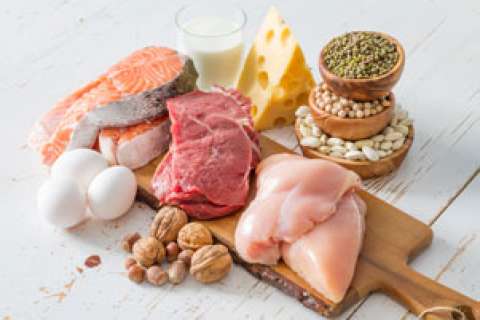Inflammation is implicated in most chronic diseases, which account for 70% of all deaths in the U.S.
Nutrition can play a key role in calming inflammation to help address chronic disease and improve overall health, says Lawrence Taw, MD, director of the UCLA Center for East-West Medicine in Torrance.
“The vast majority of these chronic diseases are among the most preventable, and they’re preventable through lifestyle medicine,” Dr. Taw says. “If we can better manage inflammation, I think we can make a dent in mortality and hopefully live healthier lives.”
Inflammation is the body’s natural defense response to injury, infection and toxins. It’s essential in acute situations, as the immune system mobilizes white blood cells to protect and heal.
Chronic inflammation, however, can be problematic. Remaining in this state of high alert can ultimately damage cells and organs and diminish immune function. Chronic inflammatory diseases – including diabetes, cardiovascular diseases and chronic obstructive pulmonary disease – are among the most significant causes of death in the world, according to the National Institutes of Health.
Stress is typically the No. 1 contributor to inflammation, Dr. Taw says. It’s not just everyday stressors such as traffic, bills and deadlines, but lifestyle factors that stress the body, including unhealthy eating and insufficient sleep.
“These stressors can become chronic, repetitive or cumulative,” Dr. Taw says. “That chronic stress cumulatively generates this concept of ‘heat.’ I use the analogy of a car engine: when we get overstressed, our body gets overworked, then our engine tends to overheat.”
Lessons from Chinese medicine can be helpful, he says, as the ancient practice categorizes foods according to their warming or cooling properties. Choosing foods that warm or cool the system can help calm inflammation and cool the “heat patterns” that stresses on the body generate, Dr. Taw says.
Warming and cooling foods
When it comes to choosing foods that are warming or cooling, it’s not about a food’s temperature, but the energy it brings to the body, he says.
“Chinese nutrition is an extension of herbal medicine, which means there are a lot of dietary herbs we can eat that can have a therapeutic effect on our system,” Dr. Taw says. “Not all inflammation is the same. Depending on the type of inflammation one has, an energetically warming or cooling diet would be recommended.”
To reduce “heat” in the body, he recommends avoiding “warming foods,” which include:
- Alcohol
- Caffeine
- Chocolate
- Red meat
- Nuts
If you’ve ever noticed someone’s cheeks or eyes turn red when drinking alcohol, “that’s an indication of ‘heat’ rising,” Dr. Taw says.
Warming spices include:
- Cinnamon
- Cloves
- Ginger
- Rosemary
- Turmeric
- Peppers
While turmeric has proven to have anti-inflammatory properties, it can still be warming for some individuals.
“In Chinese medicine, it’s important to distinguish between cold-induced ‘heat’ and heat-induced ‘heat,’” Dr. Taw says.
Cold-induced heat describes inflammatory symptoms that worsen in cold weather, which is common with conditions such as osteoarthritis or rheumatoid arthritis.
“Those patients would do well with ginger or turmeric to warm up their joints to help prevent their inflammatory symptoms,” Dr. Taw says.
The best way to self-diagnose whether one’s inflammatory symptoms are heat-induced or cold-induced is to notice whether symptoms worsen in the winter or summer, he says.
People with heat-induced heat, on the other hand, might opt for a diet that includes cooling foods and spices, such as:
- Melons
- Berries
- Cucumber
- Spinach
- Lettuce
- Zucchini
- Soybeans
- Barley
- Celery
- Mint
- Cilantro
- Seeds, such as flax, pumpkin and sunflower
- Floral teas, such as chamomile, chrysanthemum and passion flower
Keep in mind that no diet is one-size-fits-all, Dr. Taw says.
“In fact, what I recommend for you today may be different six months from now, when the seasons change, or if you have different presenting symptoms,” he says. “This can be a moving target so we have to adjust your diet to achieve an energetic balance.”
Other lifestyle practices that reduce "heat" in the body include adequate hydration, regular elimination, smoking cessation, restorative sleep and aerobic exercise.
“Breaking a sweat through exercise, like through walking on your lunch break, is a simple, regular way to clear heat,” Dr. Taw says. “If we can address these aspects of lifestyle, we can change the underlying pattern.”
Quoting a Chinese proverb, he concludes: “If we don’t change our direction, we’re likely to end up where we’re headed.”




